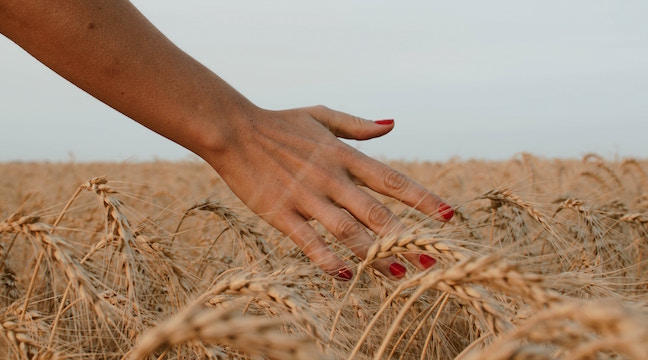
Everybody hates wheat now. It’s maligned as a cause of several health problems. We’re told it makes us fat. It’s bad for your gut. It slows your mental processing down. The list goes on, much of it rooted in quasi-science and Dr. Oz-level speculation.
But slow that noise. Because wheat is also the base of pasta. Bread. Cookies. It’s intoxicating (in a fun way). As such, it’s worth fighting for and learning about. Especially because — more than perhaps any food product on the market today — modern wheat is deeply misunderstood.
More often than not, nutritionists and doctors talk about bread and wheat and gluten as though they’re all one monolith product without variance or nuance. The train of thought often goes: Bread has gluten. Bread is made of wheat. So, remove all wheat from your diet. It’s a throw-the-baby-out-with-the-bathwater fallacy.
Truth is, there are a lot of different kinds of wheat from different eras of history on the shelf today. So generally saying ‘wheat’ when you mean a specific type (bleached white flour) is like positing that all apples are Granny Smiths. That’s before you even get into how baking bread has changed through the abandonment of sourdough starters, how processing wheat to flour changed, and how growing common wheat (drastically) changed between the 1950s and 1970s.
Let’s take a step back and look at what wheat actually is, how different kinds of wheat have evolved, and what to expect from the many varieties.
A FEW WORDS ON GLUTEN
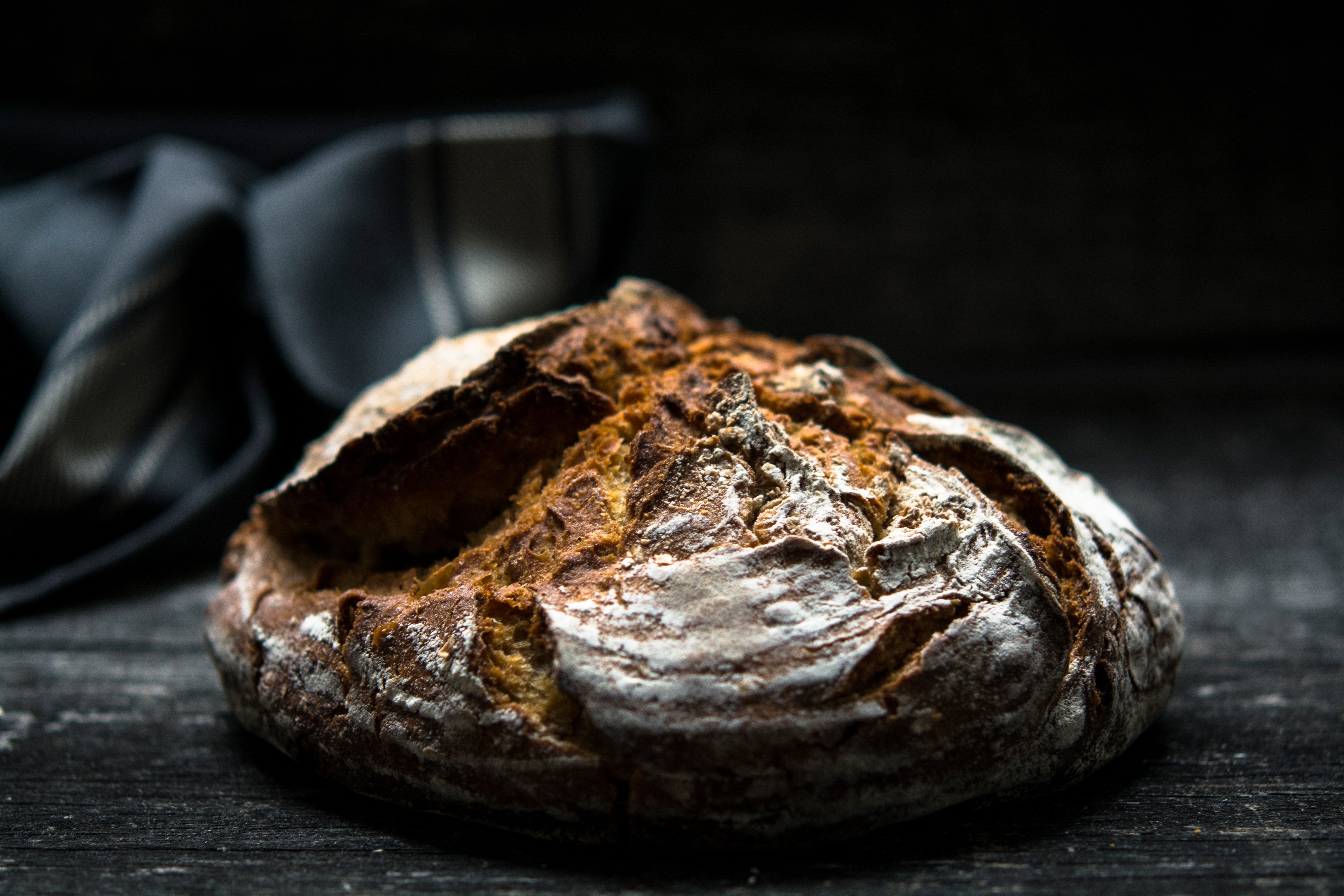
Let’s get this out of the way: All wheat has gluten. But not all wheat is created equal when it comes to what it is, how it’s grown, and its processing — which effects each particular wheat’s gluten content.
A hard and fast rule for the gluten sensitive is that if a wheat or flour has a lower protein content, it’ll have a lower gluten content. High protein flours have more gluten and make better bread. Lower protein means lower gluten which makes better cakes. But even that litmus is very broad and really only applies to common wheat that’s grown at industrial levels.
There’s also a lot of debate over whether “gluten sensitivity” or even Celiac is being caused by gluten. Part of that is due to the relative newness of cases and the limited research being done to figure it out. Another part of the problem is due to huge corporations like Monsanto lobbying against major studies being conducted (or ghostwriting others) on their weedkiller: Roundup, or glyphosate.
Gluten sensitivity and Celiac’s rise is tied to the industrialization of our food commodities over the last 50 years (more on that later). And that shift has largely gone unstudied. This is changing — albeit very slowly. We’ve yet to look at whether or not Roundup has an effect, much less negative one, on our gut florae for instance. We do know glyphosate does transfer from the plant into the body because of urine studies conducted in Germany. So, we know that that agro-chemical is inside of us. We just don’t know what it’s doing to our microbiome. Still, it’s not too crazy a stretch to conclude that a chemical meant to kill florae could be having an ill effect on our own florae, which manage our body’s health.
A way to avoid this is to buy organic wheat and flour which is banned from using agro-chemicals like glyphosate on their products. Another way to avoid the scourge of industrialized farming and to focus on older wheat strains which are grown in much smaller quantities and have varying advantages nutritionally.
All that said, if you’re genuinely sensitive to all wheat, we aren’t here to fight you. You know your body, we’re just sharing info.
HULLED vs. FREE-THRESHING
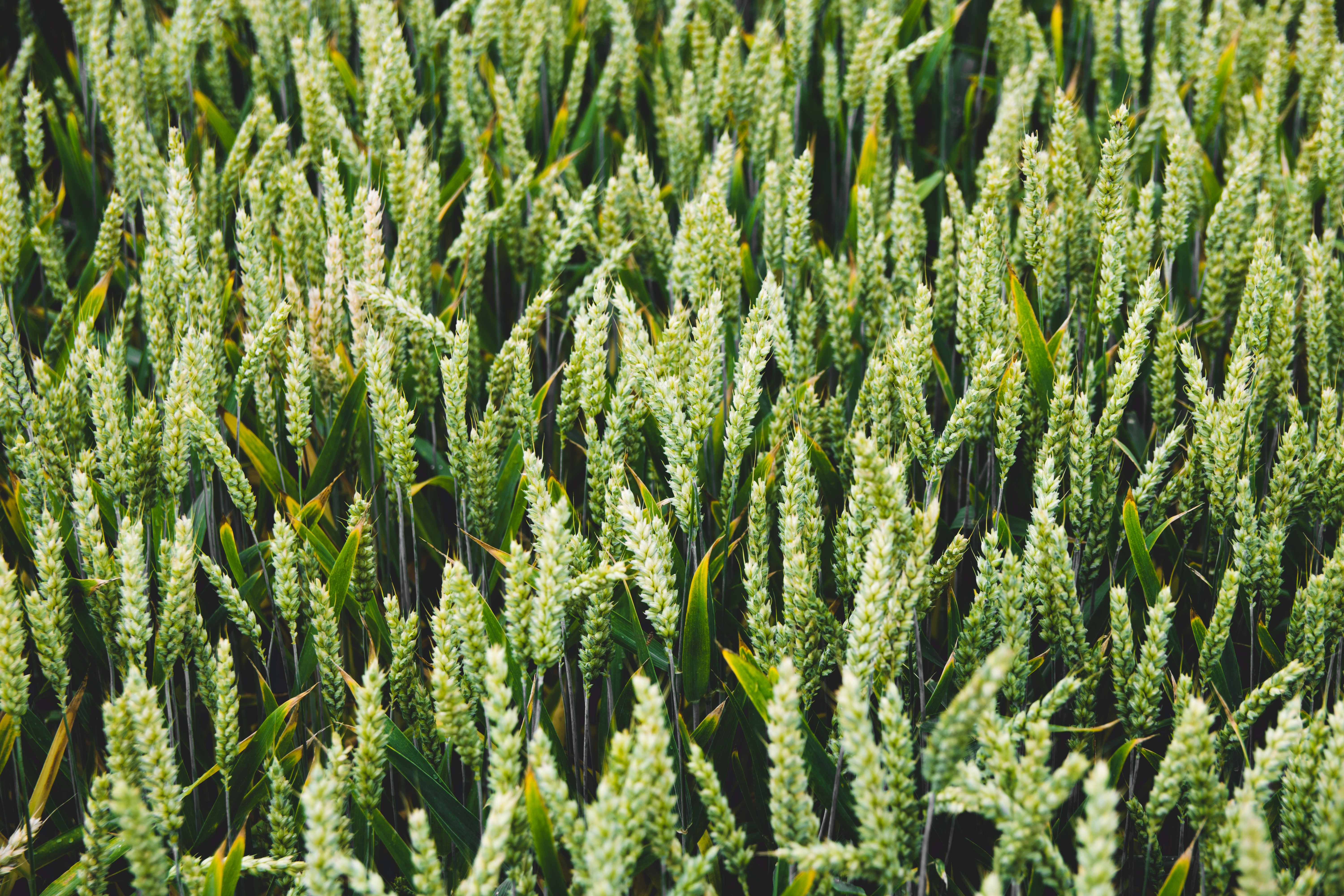
We have to start here, as this is a crucial distinction when we’re talking wheat. A hull is what covers the grain or berry of wheat, protecting it while it grows. Free-threshing wheat means that the hull is loose and easily removable, making milling much more efficient.
There’s archeological evidence that shows that we were eating wild wheat as hunter-gathers. Wild wheats are the un-domesticated cereals from grasses that grow between the Mediterranean and Tibet on the Eurasian continent. Just last year a paper was published showing that we were storing and eating wild wheat at least 30,000 years ago around the Fertile Crescent and what is now Syria. So, while wheat was crucial to the agricultural age, it has been part of the human diet for a very long time.
Then, around 10,000-12,000 years ago we started domesticating wheat, measuring off plots of land, and stopped roaming for our food. That’s when we started crossbreeding to make wheat easier to mill. Enter durum wheat. All wild wheat and early domesticated versions had hard hulls that completely encased the wheat berries. That meant you had to pound the wheat — or thresh it — vigorously to loosen the hulls. Durum wheat was one of the first kinds of wheat that had a very loose hull that came off easily by design. But that also meant that the wheat berries inside where not as well protected. This meant faster processing of wheat for our agrarian ancestors.
To recap, all wild wheats are hulled — or well-encased with a protective husk — and so are the domesticated versions of wild wheats. Whereas hybrids are generally free-threshing, meaning that protective casing is softer and looser allowing easier processing and less protection.
TYPES OF WHEAT
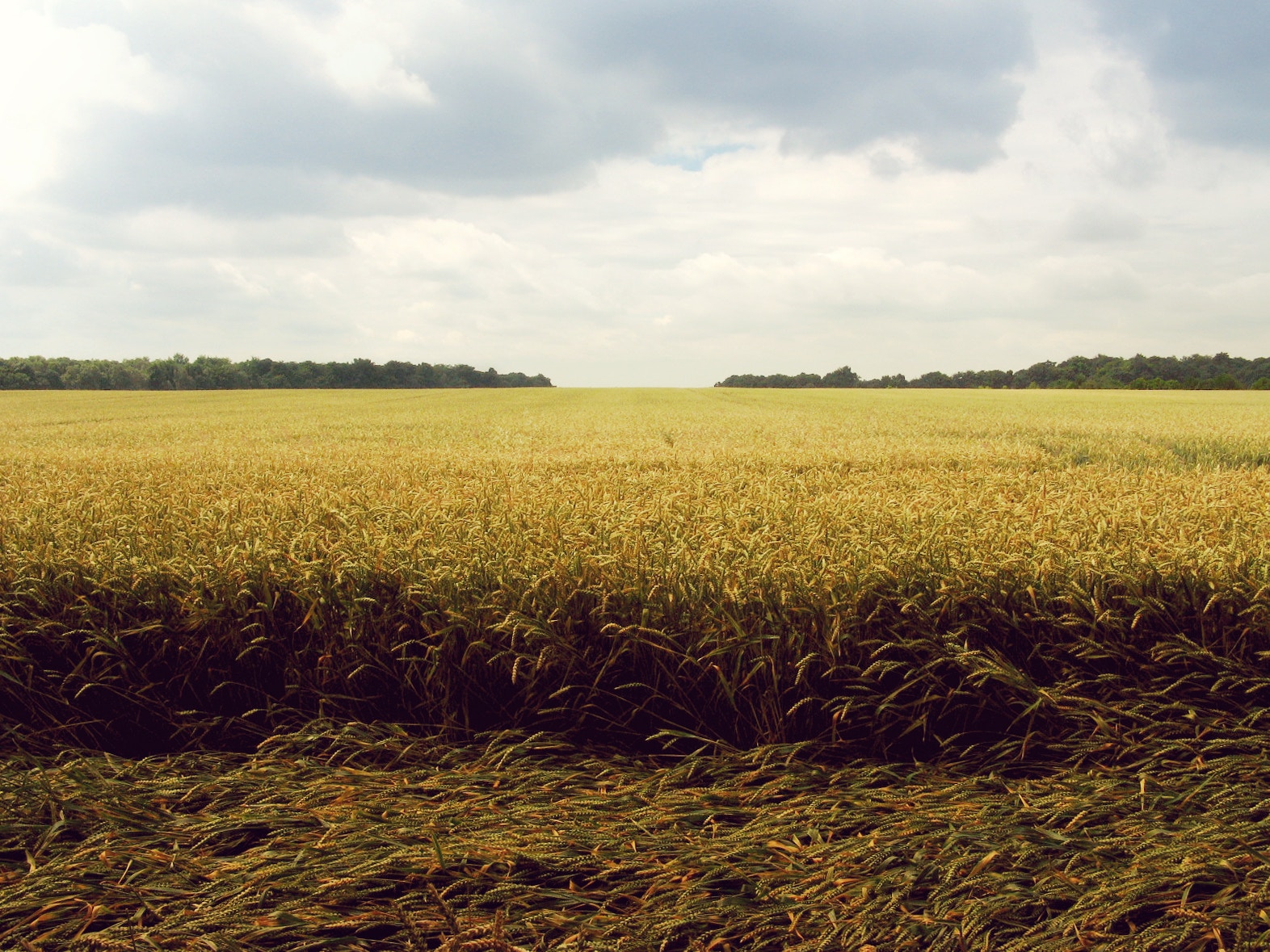
There are several types of wheat available on the market today and they aren’t all equal when it comes to nutrient content, glutens, or how they’re grown. While rye and barley are important cousins to wheat — and they’re used for bread and booze especially — we’re going to focus on the main wheat strains available today.
1. Einkorn Wheat
Einkorn wheat is one of the oldest wheats that we know was part of the human diet. We’ve been eating it for at least 30,000 years. Einkorn, along with most wheat varieties, was domesticated between ten to 12,000 years ago.
It’s also a very rough grain compared to modern wheat. The hulls are hard and difficult to remove. It grows with little effort and doesn’t require finicky conditions like modern common wheat.
Einkorn is higher in protein and contains higher amounts of fats, beta-carotene, and potassium than common hybrid wheat. That higher protein content means higher gluten content as well.
Best way to use: Einkorn is still used from France to Turkey for heavier bread, some pasta, and grain (whole berry) dishes similar to couscous or quinoa.
Emmer or Faro Wheat
https://www.instagram.com/p/Bes1mPhhZ-9/
Emmer wheat was one of the first wheats to be domesticated, along with einkorn. Although, there’s archeological evidence that shows we were eating wild emmer at least 17,000 years ago as hunter-gatherers. Sites from around the Fertile Crescent show that emmer was the preferred wheat for human consumption, far outpacing both barley and einkorn in food stocks. That means emmer was a standard grain for bread (and even beer) from Ancient Egpyt to Turkey, Spain, Ethiopia, Morocco, Armenia, and almost all points in between, throughout Eurasia.
Emmer is higher in fiber than common wheat. Its strong hull protects the wheat grain from damage, making it easily grown in harsh conditions. Emmer is also lower in gluten, but still hearty enough to make good bread.
Best way to use: Emmer is common throughout the same regions to this day. You’ll find it all over Italy especially under the name, ‘Farro’ or ‘Faro.’ So, pane di farro is literally bread of farro. The whole grains, or dried berries, are used for a dish called faro that’s similar to a risotto. You’ll also find the berries in soups a la barley in minestrone. And emmer is used for making whole grain pasta as well — though emmer pasta is much more common outside Italy in places like Germany and at your local health food store.
Spelt or Dinkel Wheat
Spelt is a hulled domesticated wheat. It came to prominence about 9,000 years ago around the north end of the Black Sea in the Caucuses and was popularized by the Greeks. By the time the Bronze Age rolled around, spelt had spread over the rest of Europe and well into Asia.
It’s good to note that Spelt is a highly nutritious food source. A 100g (3.5 oz) serving of spelt carries 338 calories while providing the body with 20 percent of the daily value of protein, B-vitamins, and fiber. It’s also high in manganese, phosphorus, and niacin — which all means good things when we’re talking about food we put in our body.
Spelt also has a higher gluten ratio, making it great for baking bread and even pasta making. However, the proteins in spelt are more soluble than common wheat. So it’s not as astringent when it comes to gluten sensitivities. Though, still, please proceed with caution if you do have those sensitivities.
Best way to use: Spelt bread and pastries are commonplace — along with various pasta assortments — throughout Central Europe. In the US, spelt is still largely available in health food stores and carries a more hippy-dippy association … for now anyway. The whole berries are used like emmer and einkorn to make porridges and risotto-like dishes as well. The flour is a seamless replacement for whole wheat flours that may have gone through the Roundup treatment.
Durum Wheat
Durum wheat was genetically modified (possibly through human selection) to create a free-threshing wheat around 9,000 years ago. Ancient farmers crossbred emmer wheat with strains of aegilops speltoides, which is fancy taxonomy talk for another grass that was primarily used as animal feed at the time. The innovation created a wheat with loose hulls but very strong grains.
Durum became the primary wheat from the Middle East through North Africa and well into Europe. It’s the wheat used to make bulgur, couscous, pasta, and pizza. The amber grain was brought to America to make pasta locally and is where we get the term amber waves of grain, in myth anyway.
Durum wheat has a slightly higher protein content than common wheat and, therefore, has a higher gluten content as well.
Best ways to use: That high protein content makes durum wheat perfect for pasta and pizza dough. You know that “bite” that good pasta and pizza have? That’s durum. Durum wheat is also used for baking bread — though it’s very rarely used like einkorn, emmer, or spelt in a whole berry porridge or risotto form. When durum is milled, the hard bits left over are where couscous comes from.
The middlings — or bran and germ — removed from durum is what makes up ‘semolina’ flour. So, when you’re making pasta and use durum flour and semolina, you’re literally reassembling the wheat grain into a whole once again. Add some eggs, and you’ve got yourself a great pasta going.
Side note: The domestication of durum includes several localized wheat strains from around Europe and Asia’s near east. Polish, Khorasan, Persian, and English wheat have a similar chromosome makeup as durum, making them genetic siblings.
Common or Bread Wheat
https://www.instagram.com/p/Be4mmGoD6O9/
Common wheat is, well, the most commonly used wheat in production today. It’s a free-threshing wheat that’s a super hybrid of durum wheat, combined with a goatgrass.
It became popular around 12,000 years ago (maybe earlier) alongside the agricultural boom. For eons, common wheat was the wheat the hierarchy ate while the working folk ate rye, barley, durum, emmer, and so forth. And, this is the wheat that went through thousands of genetic modifications between the 1960s and ’70s during the Green Revolution.
A little background: In the mid-20th century, Norman Borlaug dreamed of ending worldwide starvation and spearheaded a massive shift in how agriculture was grown worldwide. It was believed at the time that if countries like India ever reached a population of 200 million or more people, they’d surely starve to death. So Borlaug (backed by the Ford Foundation and the Rockefellers) conceived an overhaul of the whole agricultural system and got the world to implement new ways of growing food by redesigning how irrigation works, using chemical fertilizers and agro-chemicals in bulk to aid growth, expanding growing fields from small plots to plots that reached the horizons with mass-mechanization for harvests, and genetically modifying cereals like wheat and rice so that they were more disease resistant and grew better with the chemical fertilizers being used. Initially, these changes took place in at-risk parts of the world — India, West Africa, Mexico, the Philippines, etc. — but, now, they’re almost universal.
Starvation plummeted. Borlaug was awarded a Nobel Peace Prize. Then the world’s population almost tripled. And with it, malnutrition skyrocketed. Unfortunately, through the Green Revolution focusing on a monoculture of crops, nutritional value was severely harmed. A paper published in 2009 looked at the food being produced under the Green Revolution practices and found that wheat and rice have “lower quality proteins, amino acid deficiencies, higher carbohydrates with unbalanced essential fatty acids, vitamins, and minerals.”
Oh, and don’t forget that the wheat being grown was a free-threshing wheat with looser hulls that were now being drenched in chemical fertilizers and agro-chemicals. And, yes, there’s plenty of evidence showing that those new pesticides caused a lot of cancer all over the world.
Why is this important? Because 95 percent of the wheat used today in our food is common wheat largely grown with the Green Revolution’s tactics with chemicals like Roundup.
Best ways to use: We’ll let you connect the dots as to why modern common wheat might not be the best thing for you. However, organic common wheat is not drenched in Roundup. So maybe that’s your play for bread, pastry, and cake flours.
MODERN COMMON FLOUR vs. HERITAGE FLOURS
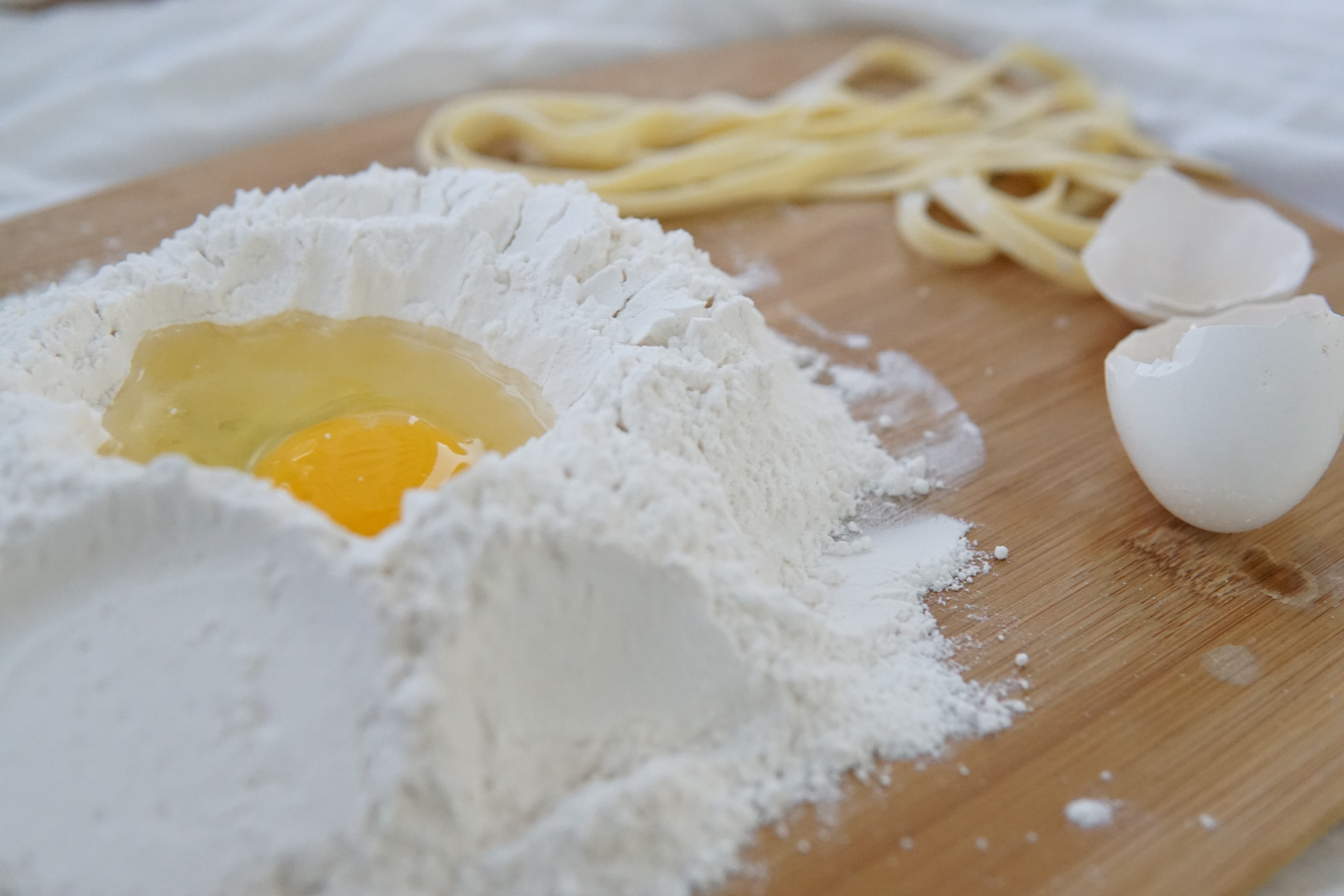
Milling wheat means threshing (removing the hulls), and then removing the bran (outer layer of the berry) and germ (reproductive seed) which leaves the endosperm (protective tissue around the seed). The endosperm is ground into the usable flour we’re all familiar with.
On the flipside, whole wheat means that the flour was made with the bran, germ, and endosperm intact, which is more along the lines of the wheat we ate throughout history. Unsurprisingly, whole wheat has been shown again and again to lower risk of heart disease, type-2 diabetes, strokes, and cancers along with better micronutrient absorption.
Back in the day, the germ and bran were left with the endosperm when it was milled. This meant that flour had a six month to one-year shelf life before it spoiled. Then the Industrial Age arrived and wheat flour needed a longer shelf life. It was discovered that removing the germ (which is full of fatty acids) extended flour’s shelf life indefinitely. Unfortunately, this ‘discovery’ was made in the 1800s when there was little to no understanding of the nutritional values of any food.
By the 1930s, we started getting a little more purchase on the fact that foods had specific nutritional qualities and so we started adding nutrients back into flour to replace those lost by de-germination and bran removal. It was called “enriching” flour. We added iron, folic acids, B vitamins, and so on.
Then things kinda got outta hand. Basically, we discovered that the higher the protein content meant better, crustier bread. Conversely, the lower the protein content meant softer flour that made better cakes, cookies, and pastries. So, instead of growing and processing different wheat, we started bleaching common flour to achieve these goals.
Bleaching or maturing flour is achieved through the addition of chemicals like chlorine dioxide, calcium peroxide (E930 on the label), and chlorine gas among several other additives. Each of these agents either increases or decreases the protein and, therefore, the gluten. This is how you get Cake Flour, Plain Flour, All-purpose Flour, and Bread Flour on your grocery store shelf. Each flour has a different protein percentage with cake flour being the lowest at around seven percent and bread flour the highest at around 13 percent.
Of course, you can get “unbleached” common flours, but they’re not nearly as mainstream, whereas emmer, einkorn, and spelt are almost always additive free and milled whole. There’s also the option of buying the physical grains/berries and milling them yourself at higher end stores like Whole Foods. They’ll often be labeled as “heritage” or “heirloom” grains and more often than not were grown in less industrial conditions and without the use of agro-chemicals — though not always. You still have to read your labels. You can also find heirloom wheats online, more and more commonly. Bluebird Grains, from Washington, is a leader in the field — with products sown, grown, harvested, and milled on site.
In the end, the older wheats will almost always be milled intact with their bran, germ, and endosperm, making them more complete nutritionally. If you grab a bag of emmer berries, the label should have one ingredient: Emmer. If you grab a bag of spelt flour, the label should have a single ingredient: Spelt. In America, if you buy organic, it’ll not have been soaked in Roundup. Then you’ll know for sure exactly what you’re putting in your body.
https://www.instagram.com/p/Be5e3R5ASzG/






